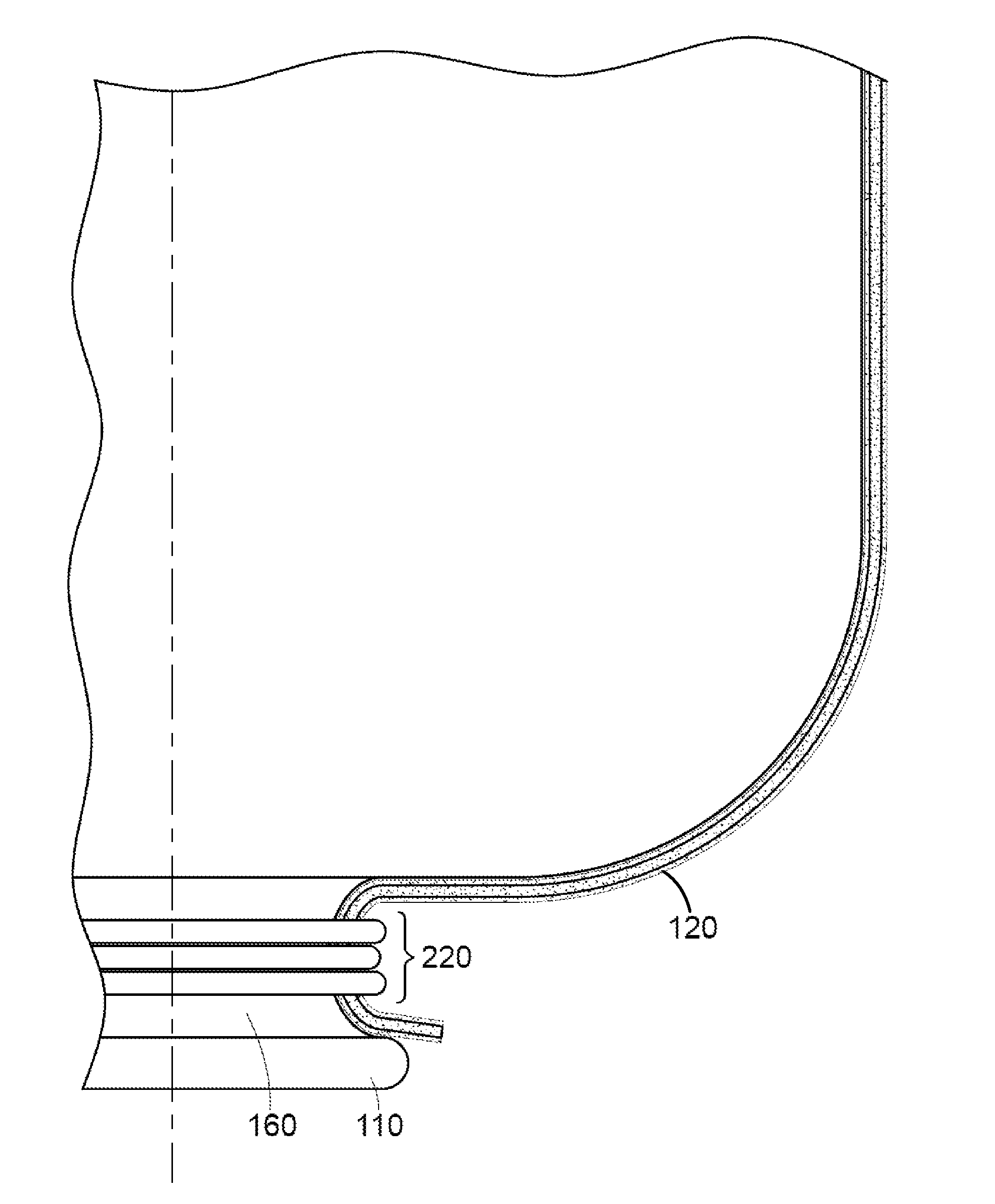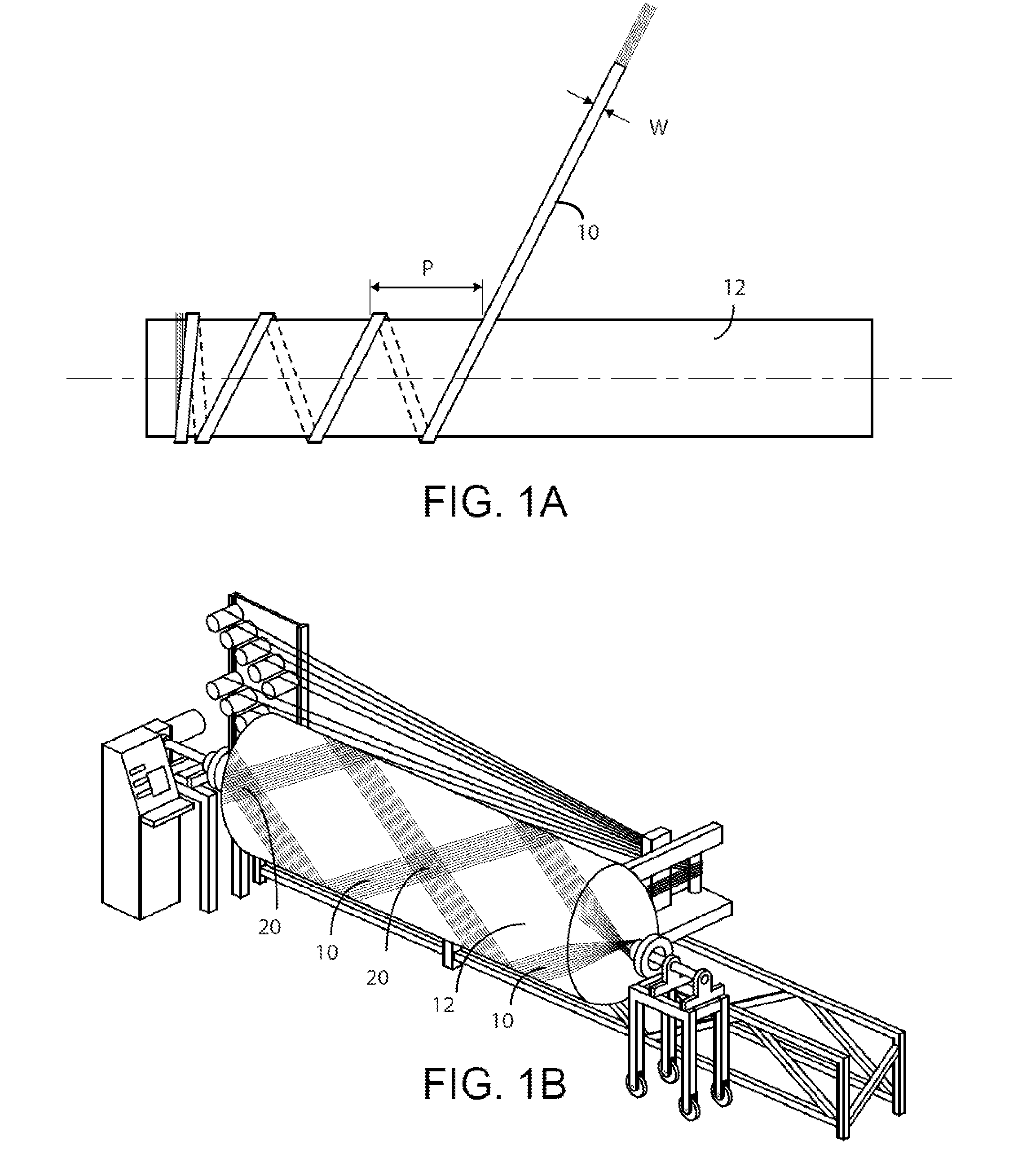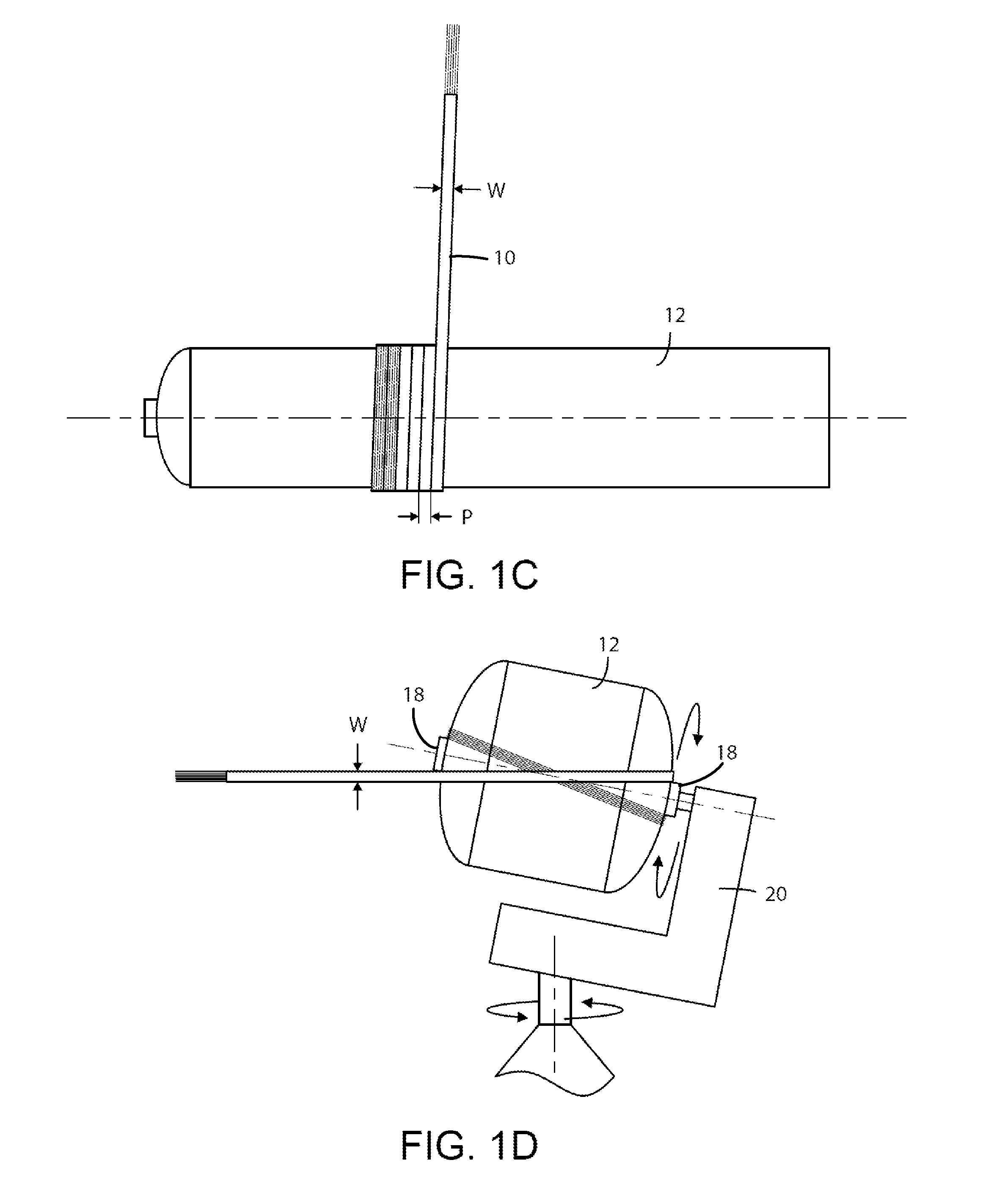System and methods for creating wrapped filament reinforced vessels, and vessels created thereby
a technology of wrapping filament and winding, which is applied in the field of system and methods for producing vessels, can solve the problems of limited fatigue strength, small use of knitted reinforcements, and reduced usable life of vessels, so as to improve the rate at which filament can be applied, avoid high-angle filament crossing stress, and improve the effect of vessel life span
- Summary
- Abstract
- Description
- Claims
- Application Information
AI Technical Summary
Benefits of technology
Problems solved by technology
Method used
Image
Examples
Embodiment Construction
[0030]As described herein, embodiments of the invention are directed to a manufacturing apparatus for filament-wound products such as pressure vessels and pipes, that significantly speeds up manufacturing and thus lowers product cost, increases product lifetime, reduces fatigue stress, and reduces weight of the finished product. These benefits are obtained by a novel combination of counter-rotation, tie-off and cutting mechanisms, tie-off retaining geometries of the form / liner, massively-parallel winding and avoidance of filament stress points typical in conventional helical winding methods.
[0031]FIG. 2A is a side view of an example system 100 for creating wrapped-filament reinforced vessels using a multitude of non-banded fibers or filaments according to embodiments of the invention. In FIG. 2A, a vessel 110 is coupled to a rotatable and slideable shaft 114, which may also include rotating and sliding bearings 116. The vessel 110 may initially be formed as a pre-form or may be form...
PUM
| Property | Measurement | Unit |
|---|---|---|
| angle | aaaaa | aaaaa |
| wrap angle | aaaaa | aaaaa |
| wrap angle | aaaaa | aaaaa |
Abstract
Description
Claims
Application Information
 Login to View More
Login to View More - R&D
- Intellectual Property
- Life Sciences
- Materials
- Tech Scout
- Unparalleled Data Quality
- Higher Quality Content
- 60% Fewer Hallucinations
Browse by: Latest US Patents, China's latest patents, Technical Efficacy Thesaurus, Application Domain, Technology Topic, Popular Technical Reports.
© 2025 PatSnap. All rights reserved.Legal|Privacy policy|Modern Slavery Act Transparency Statement|Sitemap|About US| Contact US: help@patsnap.com



